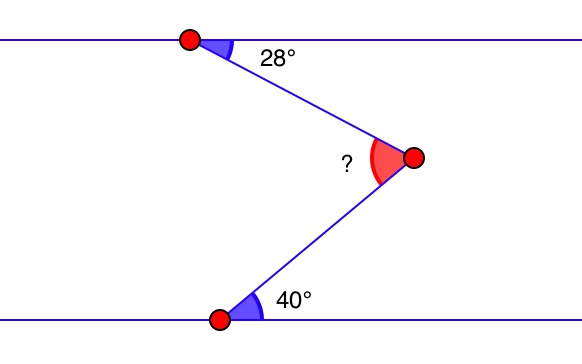TEACHING DISCRETE MATHEMATICS IN GRADES 7-12 Hart, Eric W. Et al., 'Teaching Discrete Mathematics in Grades 7-12,' Mathematics Teacher 83, no. 5 (1990): 362-367. TEACHING DISCRETE MATHEMATICS IN GRADES 7-12 By ERIC W. HART, JAMES MALTAS, and BEVERLY RICH The NCTM's Curriculum and Evaluation Standards for School Mathematics (Standards) (1989) explicitly recommends discrete mathematics for inclusion in the 9-12 curriculum, and many of the recommendations for the middle grades can be addressed by teaching discrete mathematics in grades 7 and 8.
Discrete mathematics is the study of mathematical structures that are fundamentally discrete rather than continuous. In contrast to real numbers that have the. An aspect of Educational Mathematics --- diversity and universality of mathematics in higher education Location Geometry ISBN: 289 /.
In this article we examine how discrete mathematics can be taught in grades 7-12. We shall first briefly discuss what is meant by discrete mathematics. In general, discrete mathematics deals with discrete phenomena and finite processes, as opposed to the continuous functions and infinite limits that are the mainstay of calculus and classical analysis. It comprises many diverse topics, some familiar to secondary school teachers, like matrices and finite probability, and others not so familiar, like difference equations and graph theory. Amidst this diversity of topics, the unifying theme of discrete mathematics is 'algorithmic problem solving,' that is, solving problems by devising and analyzing algorithms that construct the solution. The Standards specifically recommends that all students in grades 9-12 should study graph theory, matrices, sequences, recursion, algorithms, and enumeration and finite probability problems. Examples of where and how to teach some of these discrete-mathematics topics will be given after a general discussion of how to fit discrete mathematics into an already crowded curriculum.
RADIO SHACK PARTNER 1680X Electronic Chess Computer. Picture taken from Radio Shack Partner 1680X box. Your RADIO SHACK PARTNER 1680X Chess Computer is a relentless and versatile chess opponent. Easy to set up and play, it can teach you proven strategies and tactics used by grandmasters. MAIN RADIO SHACK PARTNER 1680X GAME CHARACTERISTICS. ABOUT RADIOSHACK PARTNER VERSION I 1680X MODEL 60-2428 ELECTRONIC CHESS COMPUTER. RADIOSHACK PARTNER 1680X VERSION I Electronic Chess Computer - picture taken from box. The main difference between Radio Schack Partner 1680X Model 60-2428 and Model 60-2428A are the way the playing levels are used. Radio shack 1680x manual download. The Radio Shack 1650 Fast Response = Concord II with the same program but of course a tabletop. 60-2428 RadioShack 1680X Chess Partner. Radio Shack Model 2. X Electric Tape Head Demagnetizer. ManualAgent has 1166 Radio Shack manuals covering 1156 models. Popular Categories: Calculators Scanner Battery Charger Caller ID Box Blood Pressure Monitor Clock Two-Way Radio Telephone Answering Machine.
Fitting Discrete Mathematics Into the Curriculum Discrete mathematics can fit into many places in the curriculum, and several possible strategies can be recommended for its implementation. • Emphasize discrete mathematics topics that are already part of the curriculum.
For example, matrices, counting, induction, sequences, sets, and logic are discrete-mathematics topics that are already in the curriculum. • Take a 'discrete' approach to old topics. For example, use matrices to solve systems of linear equations and to represent geometric transformations, or represent relations using graphs and matrices, or use recursive formulas for sequences. • Teach short (two- to ten-day) units on 'new' discrete-mathematics topics.
Materials are rapidly becoming available for topics like graph theory, difference equations, game theory, and linear programming. But do we have room? Many teachers are already teaching such units without eliminating other topics by teaching the units during 'slack' times, such as just before and after vacation breaks. Also, one can make room in the curriculum by reducing the time spent on such topics as factoring and two column proofs, as recommended in the Standards. • Teach a full-semester course on discrete mathematics. Numerous high schools around the country are already starting to take this approach. At present such a course is most commonly viewed as a senior mathematics course for better students.
But a discrete-mathematics course could fit into the curriculum. In particular, discrete mathematics topics are well suited to the 'core curriculum' recommendation of the Standards (see Hirsch and Schoen [1989]). That is, the same topics can be taught at different levels and with different applications.

Thus, a discrete-mathematics course could be appropriate for students who now take 'general math,' for students who have completed first-year algebra or geometry but are not quite ready for second-year algebra, or for students who need a course to follow or replace calculus. • Weave in discrete mathematics. Many discrete mathematics topics can be woven into the existing curriculum, as discussed in categories 1, 2, and 3 and also by using discrete-mathematics topics as examples and applications within the existing curriculum. For instance, a game-theory example, like finding the optimum percentage of fast balls that a pitcher should throw in the game of baseball, can be presented as an application of solving systems of linear equations or an apportionment example, like apportioning seats in a state legislature, can be presented as an application within a unit on fractions.
